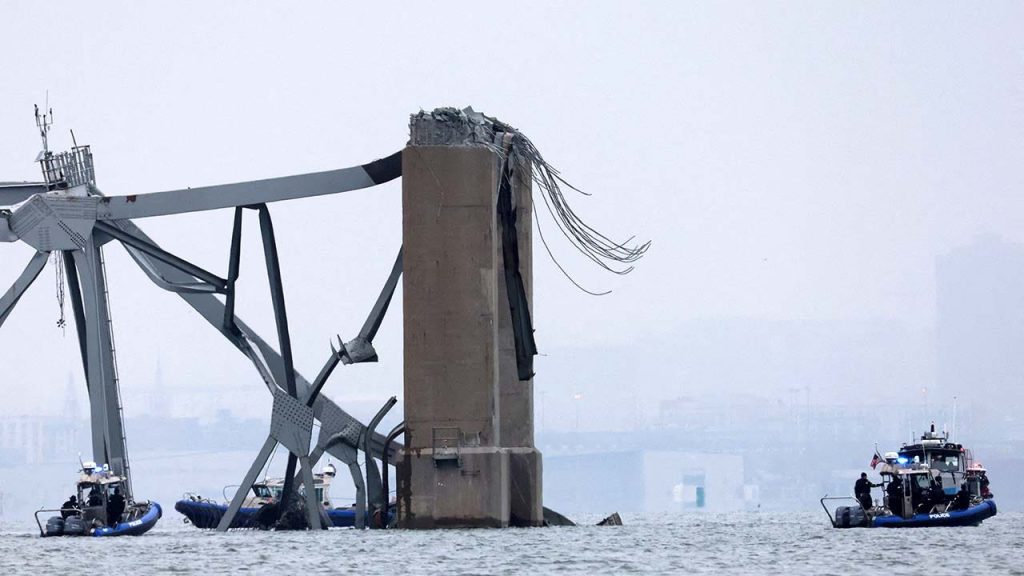Maryland authorities recovered two bodies on Wednesday after a cargo ship collided with the Francis Scott Key Bridge, causing it to collapse and sending workers into the water. Divers found a red pickup truck submerged under 25 feet of water with two bodies trapped inside, identified as Alejandro Hernandez Fuentes and Dorlian Castillo Cabrera. Four other construction workers are still missing and presumed dead. The victims were from Mexico, Guatemala, Honduras, and El Salvador, according to Maryland State Police Superintendent Col. Roland Butler. All search efforts have been exhausted, with authorities believing the other vehicles with victims inside are encased in superstructures and concrete from the collapsed bridge.
The investigation into the bridge collapse intensified as the Baltimore region grappled with the sudden loss of a major transportation link and the closure of a vital port. U.S. Coast Guard Rear Admiral Shannon Gilreath revealed that the ship involved in the collision was scheduled for maintenance, but authorities were not alerted to any issues. The ship collided with a support pillar, leading to the span’s collapse. Maryland Gov. Wes Moore described the Key Bridge collapse as a global crisis, emphasizing the significance of the port of Baltimore to the national and global economy. The port handles a significant amount of cars and farm equipment compared to other ports in the country.
Synergy Marine Group, which manages the ship, stated that the collision occurred under the control of one or more pilots, specialized in guiding vessels in and out of ports. The ship was bound for Sri Lanka and owned by Grace Ocean Private Ltd., with Maersk chartering the vessel. The ship was flying a Singapore flag, and Singapore officials announced plans to conduct their own investigation while supporting U.S. authorities. The impact of the bridge collapse extends beyond Maryland, affecting global transportation and trade networks that rely on the functioning of the port of Baltimore.
The tragic incident at the Francis Scott Key Bridge resulted in multiple fatalities and left several families mourning the loss of their loved ones. Authorities have shifted from a recovery mode to a salvage operation due to the challenging conditions surrounding the submerged vehicles. The collapsed bridge has disrupted transportation and commerce in the region, emphasizing the importance of critical infrastructure for economic activities. The investigation into the collision will shed light on the circumstances leading to the disaster and determine any potential liabilities or factors contributing to the bridge collapse.
The port of Baltimore plays a crucial role in national and global trade, and its temporary closure due to the bridge collapse has significant economic implications. The coordination between local and international authorities in the investigation reflects the complex nature of maritime incidents involving multiple stakeholders. The maritime industry will likely undergo scrutiny regarding safety protocols and operational procedures in the aftermath of the collision. The recovery efforts for the victims and vehicles trapped in the wreckage will require specialized equipment and expertise, given the challenging underwater conditions.
As the investigation unfolds, questions regarding the maintenance and operational practices of the ship involved in the collision will be scrutinized. The tragic loss of life and disruption to transportation infrastructure serve as a reminder of the fragility of critical infrastructure and the necessity of stringent safety measures in maritime operations. The global supply chain may experience ripple effects from the temporary closure of the port, underscoring the interconnectedness of the maritime industry. The recovery and salvage operations will be complex and require collaboration between various agencies to ensure a thorough and comprehensive response to the bridge collapse.















